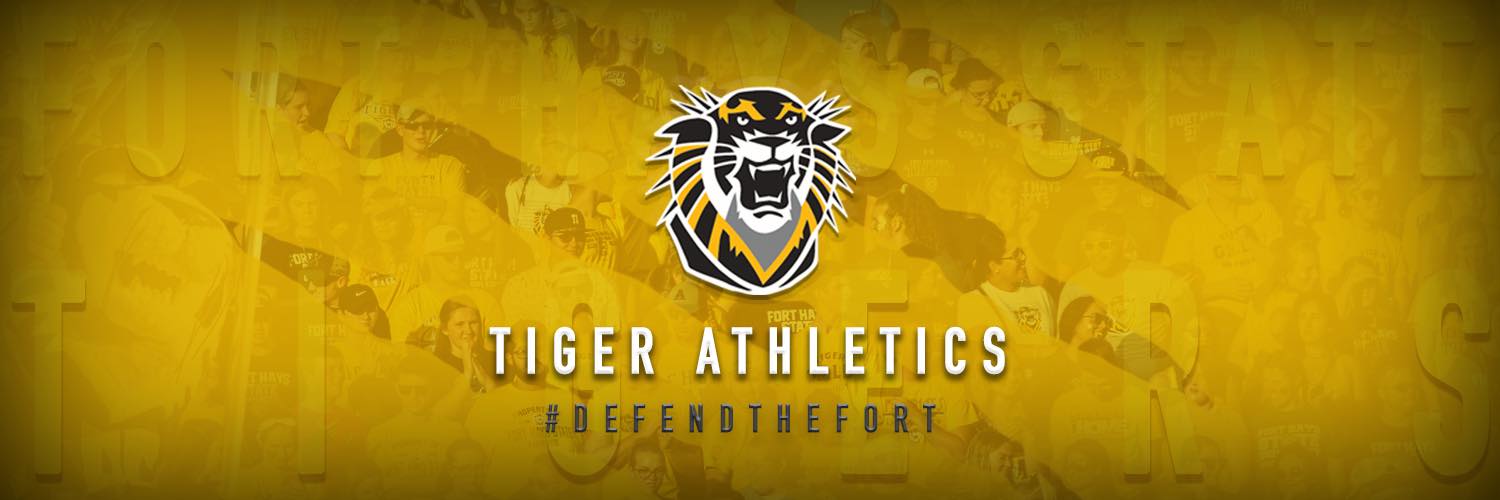BY MAKENNA ALLEN
During a time in which all NCAA and MIAA activities — from practices to competitions — have been canceled, it might be easy to believe the Fort Hays State University Athletics Department faces a slow period.
With no games to host and practices to coordinate, one might question what is left of Tiger Athletics for the time being. However, this unprecedented spring season has administrative staff and coaches working to juggle a new load of tasks.
This is no time for the department to sit back and wait for further notice to resume business as usual. Rather, administrators must focus on projects that existed prior to the COVID-19 outbreak and still maintain their significance. Each administrator carries responsibilities that range from facility projects to finalizing statistical data for the winter and spring sports to connecting with student-athletes for future planning.
With these unique duties comes challenges that are specific to the individual. For athletic Director Curtis Hammeke, the greatest difficulty he faces is coping with the novel situation as a whole.
“The hardest part of the transition has been the confusion of handling an issue we have never had to deal with before,” he said.
As he manages the confusion, Hammeke works to keep up-to-date when it comes to MIAA and NCAA decisions while simultaneously “maintaining communication with staff, prepping for 2020-21 related to season tickets, marketing contracts, rescheduling postponed events and monitoring student-athlete eligibility and transition to online courses.”
While the athletic director coordinates such activities, Dixie Balman, assistant athletic director of compliance and senior woman administrator, heads up the job of communicating with student-athletes virtually. Though this aspect of her job has altered dramatically, many of her responsibilities during this season remain constant.
“To me, the main difference for time commitment is that my weekends are now free. Otherwise, this time of the year is busy,” Balman said. “I have several large reports that are due to the NCAA, with one, in particular, the ISSG (Institutional Self Study Guide) that is completed every five years.”
Similar to Balman’s experience, sports information director Ryan Prickett relates that the transition to remote learning has not altered many of his typical responsibilities, other than coverage of athletic events.
“The sports information and athletic media relations profession is very technology-driven, so I am accustomed to utilizing software that allows me to work on files and platforms from wherever I am located, whether it be on or off campus,” Prickett said. “From a distance, we can still put together stories and content for our website, produce social media content (graphics and video), work on statistical files, and communicate with coaches and athletes via phone, video chat or email.”
Prickett admits, however, the transition has not been without its challenges.
“The hardest part about the transition so far is not being able to just drop into an office in person real quick to touch base on work-related items, whether it be talking with my immediate sports information staff, other FHSU Athletic staff members and coaches,” Prickett said.
Balman echoed the sentiment that the lack of ability to meet face-to-face presents difficulties on multiple levels.
“This time of the year, normally I am meeting with many of the student-athletes, so transitioning to the use of Zoom and phone calls can be challenging,” she said. “I am a very social and extroverted person, so this has been an adjustment for me.”
Administrators like Balman aren’t the only FHSU Athletic staff members working to communicate with student-athletes virtually. Tiger coaches are among those connecting and coordinating their teams from their homes.
For head track and field and cross country coach Jason McCullough, working from home poses a unique set of challenges resulting from children participating in online school and a spouse trying to work from home as well.
“There are many more distractions at the ‘home office’ than at work, and it often takes me away from what I am working on,” McCullough said. “My wife and I are also trying to share an office room, which is challenging when one needs to have a Zoom meeting.”
Like McCullough, head women’s tennis coach Brian Flax has been spending more quality time with his daughter due to the changes in his team’s schedule. Even despite the benefits, Flax relates that the unforeseen shift has been trying.
“I hate being at home all the time,” Flax said. “In our job, we are always preparing our team or working other sporting events, so sitting at home is not something I am used to.”
Ultimately, both coaches must focus on the range of tasks before them.
“The bulk of my time now is used for recruiting, preparing a schedule for next year, budget analysis from last year into this fiscal year, and practice planning,” McCullough said. “The fall cross country schedule dictates our training plans, so that is what I am currently working on. We are also trying to finalize indoor and outdoor track and field meets so that we can begin planning travel needs.”
Both McCullough and Flax emphasized the importance of connecting with athletes, whether it be through a team app or via texting. Administrative staff members such as Balman and Prickett also suggested proper utilization of technology is the key to success in these turbulent times.
“Our department provides the window to our athletics’ programs online through our website and social platforms, providing constant information to the public on FHSU Athletics,” Prickett said. “The world is very interconnected now through technology right at your fingertips, so it is much easier to work remotely today than it was 15 to 20 years ago.”

